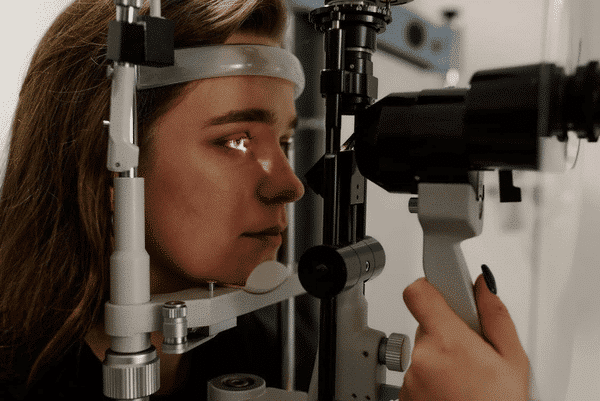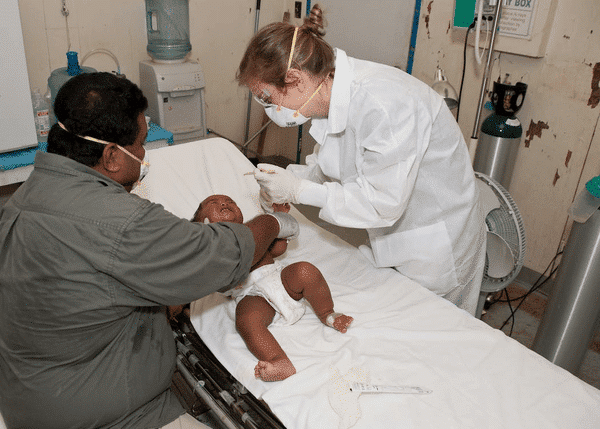According to the World Health Organization (WHO), more than two billion people worldwide are suffering from micronutrient deficiency. Micronutrient deficiency, which is also referred to as “hidden hunger,” is the lack of enough vitamins and minerals. It’s usually caused by poverty, inaccessibility to various healthy foods, illiteracy of optimal dietary practices, and a higher incidence of infectious diseases.
Pregnant women, lactating women, and young children are most vulnerable to micronutrient deficiencies. This is because they have a significantly greater need for micronutrients and are more prone to the adverse effects of deficiencies. This post will walk you through the most common micronutrient deficient conditions in women and children, their symptoms, and preventive measures.

1. Anemia
Anemia is caused by a lack of either anemia, vitamin B-12, or folate. Young children and women of childbearing age, especially in areas where intestinal parasitic infestation and malaria, are most likely at risk of anemia. There have been around 2.5 million and 3.4 million maternal and neonatal deaths caused by anemia around the world.
Anemia’s symptoms are the following:
- Weakness/Tiredness/Fatigue
- Dizziness or lightheadedness
- Headaches
- Irregular heartbeats
- Breathlessness
- Chest pain
- Pale or yellowish skin conjunctiva (inner eyelid), nail beds, gums, tongue, lips, and skin
If left untreated, anemia can result in:
- Pregnancy complications. Pregnant women must double their iron consumption to produce more blood and supply oxygen to their babies. Severe anemia may lead to low birth weight and even premature delivery of the babies.
- Heart problems. Anemia leads to arrhythmia or irregular heartbeat. If you’re anemic, your heart should pump more blood to compensate for the lack of oxygen in your blood. Otherwise, this instance will lead to heart enlargement and failure.
- Death. Sudden blood loss will result in fatal acute or severe anemia. This situation usually happens whenever someone has inherited anemia, like sickle cell anemia, causing someone’s sudden death.
To prevent anemia from happening, one should include the following in their diet:
- Iron-rich foods from dark green leafy vegetables like spinach, seafood, meat, poultry, beans, and legumes;
- Folate or folic acid from enriched grain products like cereal, bread, pasta, and rice, as well as green peas, kidney beans, peanuts, dark green leafy vegetables, and fruits;
- Vitamin B-12-rich foods from fortified cereal, dairy products, meat, and soy products; and;
- Vitamin C-rich foods from citrus fruits, other fruits like strawberries and melons, tomatoes, peppers, and broccoli.
Moreover, there are non-prescriptive iron supplements to prevent or treat iron-deficiency anemia in women. However, if taken by children, see a doctor first before consumption. Additionally, if you have insufficient prescription coverage, you may rely on discount cards and coupons by looking at various sites and blogs, like The Bee Healthy Blog. With these cards, you may be able to save up to 80% at over 60,000 participating pharmacies, even if you’re insured.

2. Xerophthalmia
Xerophthalmia is an eye disease caused by a severe deficiency of vitamin A. Lack of vitamin A can dry out your eyes and tear ducts, causing white spots on one’s eyes and ulcers on corneas. If vitamin A deficiency cannot be treated, the following symptoms will progressively occur, starting from mild to worse:
- Night blindness
- Conjunctival Xerosis or dryness of the eye membranes
- Keratomalacia or the eye softening and ulceration of the cornea
Vitamin A deficiency is common in many children in developing countries, with less access to fresh vegetables, fruits, and animal products. Additionally, the following factors affect Vitamin A absorption:
- alcoholism
- cystic fibrosis
- celiac disease that limits nutrient absorption
- chronic diarrhea
- Cirrhosis (liver disease)
- radioiodine treatment for thyroid cancer
Vitamin A deficiency is the primary cause of preventable blindness in children and women. It also increases the risk of disease and death from severe infections such as diarrhea, measles, chickenpox, and respiratory infections and heightens the risk of maternal mortality.

3. Iodine Deficiency Disorders (IDDs)
As stated earlier, iodine is used to produce and regulate thyroid hormones, which are needed for bone and brain development during infancy and pregnancy. Hence, iodine deficiency can cause hypothyroidism or low levels of thyroid hormones.
Around the world, there are 8 million babies who are born mentally impaired due to maternal iodine deficiency. A severe iodine deficiency or low amounts of thyroid hormones during a woman’s pregnancy can increase the risk of:
- Stillbirth
- Miscarriages
- Preterm Delivery
- Congenital abnormalities in newborns, such as cretinism or irreversible form of mental retardation
Babies with iodine deficiency often encounter:
- puffy face
- large tongue
- extreme sleepiness
- frequent choking
- poor muscle tone
- constipation
For children and teens, this condition may lead to:
- delayed tooth development
- poor growth
- delayed puberty
- poor mental development
Iodine deficiency also causes cognitive issues in adults, such as having low IQ and trouble learning. Aside from pregnant women, this condition is very common to:
- People who are following a vegan or vegetarian diet;
- People residing in mountainous areas, where seafood and iodized salt are limited; and
- People who are living in areas with inadequate iodine in soil, including other areas in South and Southeast Asia, New Zealand, and European countries.
Final Thoughts
The life-threatening health impacts of micronutrient deficiency aren’t always visible, making it too late for others to prevent the chronic diseases caused by it. However, if treated right away, they can be totally reversed with little to no side effects.

